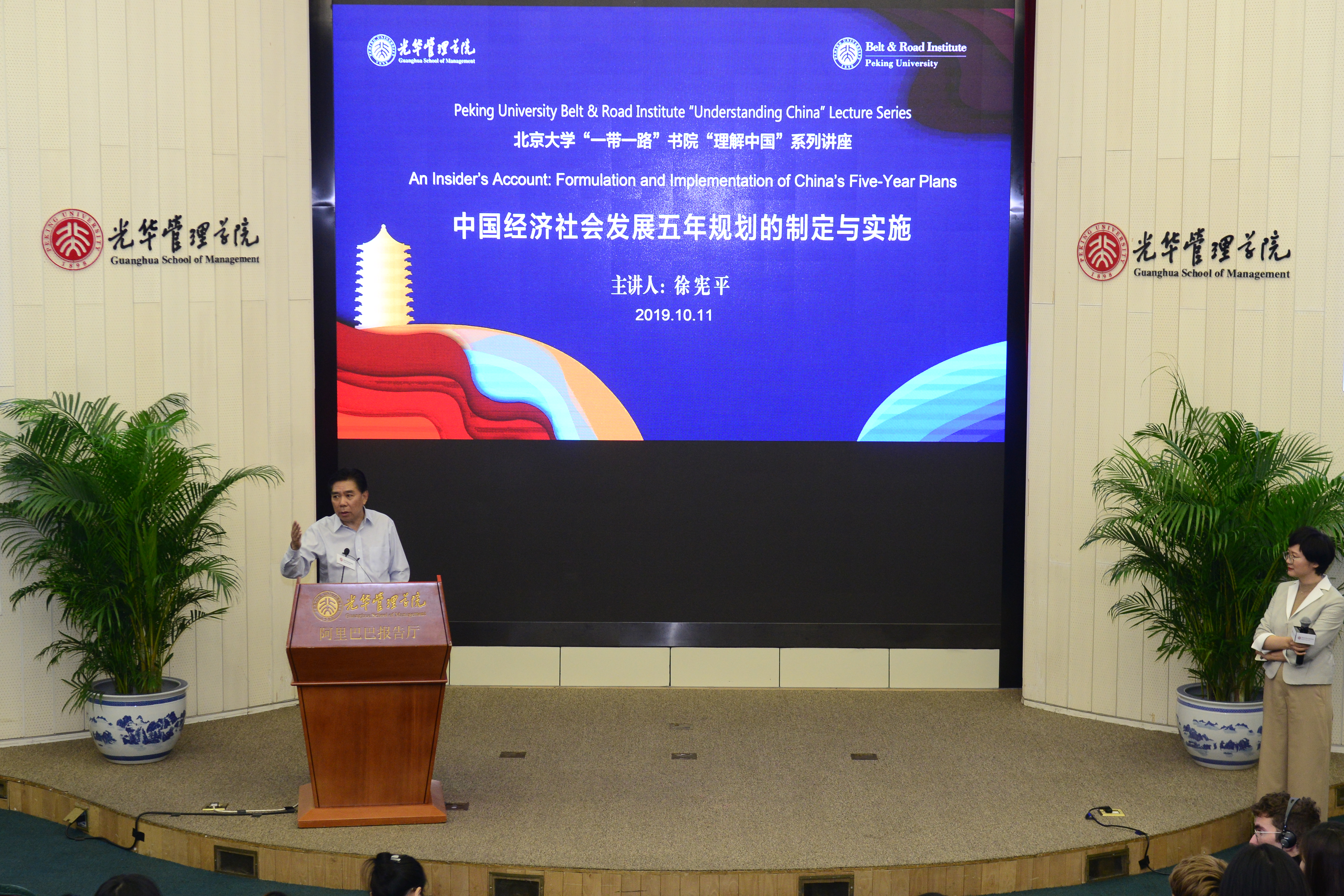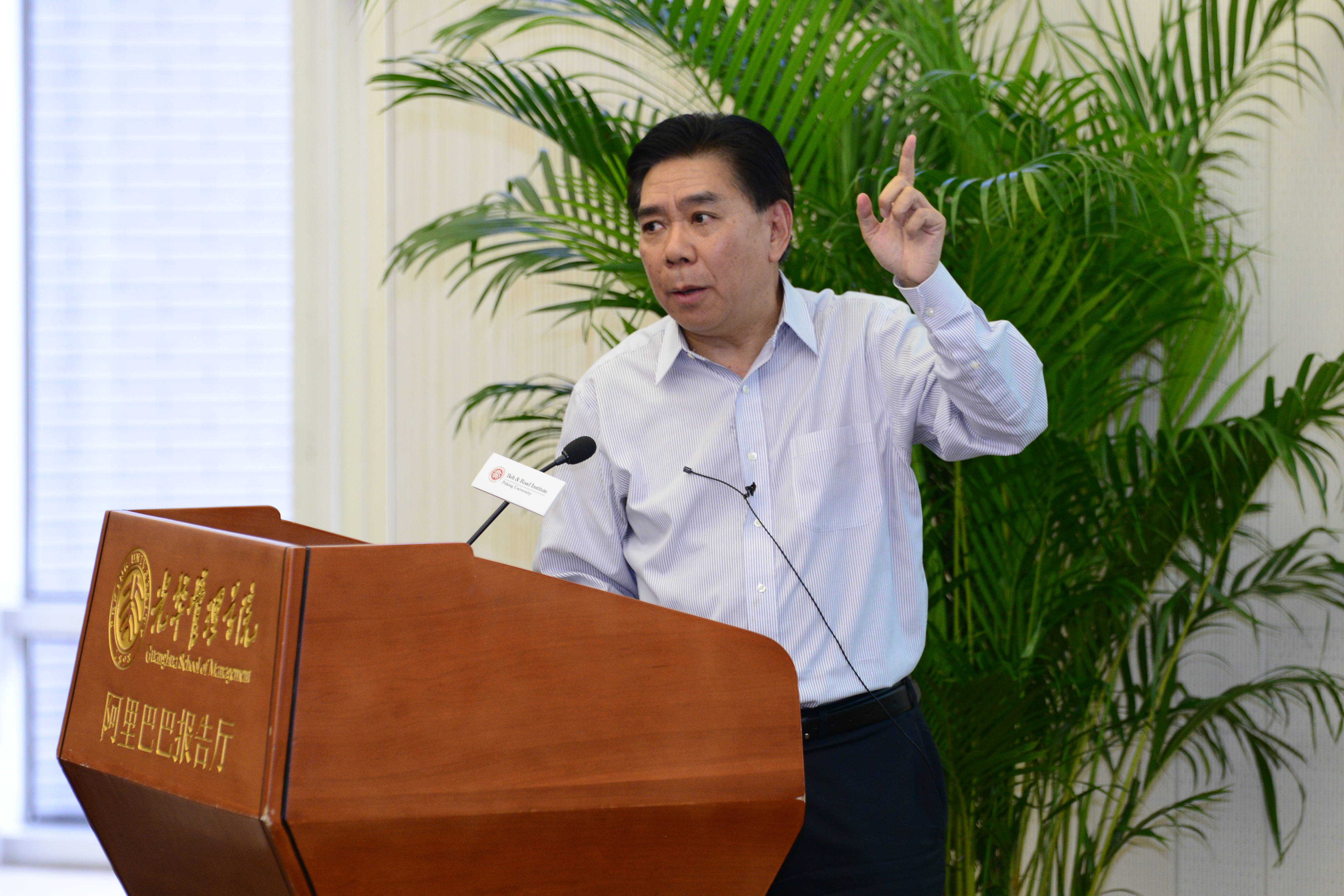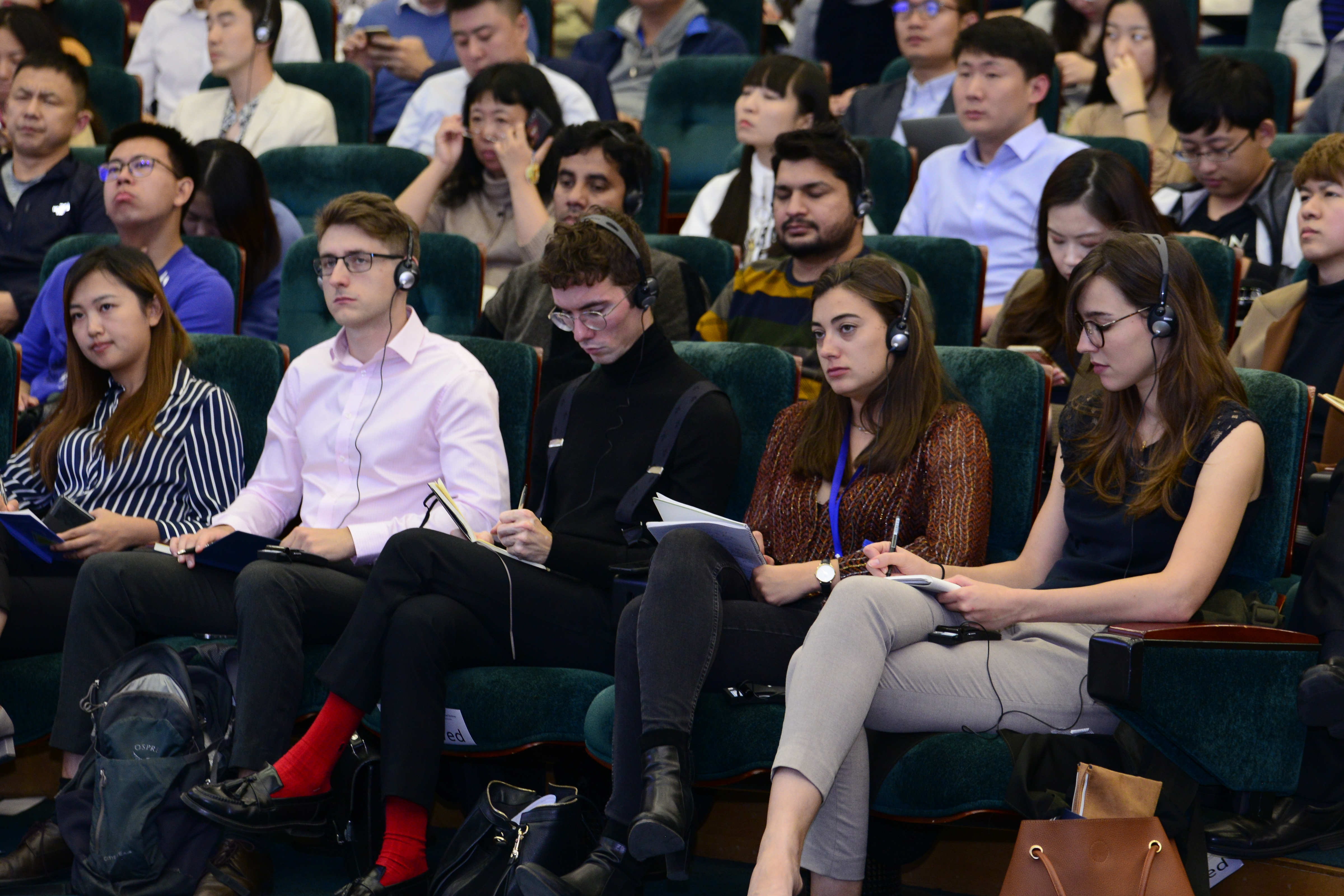Peking University, October 15, 2019: On October 11, as part of the Peking University Belt & Road Institute “Understanding China” lecture series, Professor Xu Xianping, a counsellor to China's State Council, professor of Management Practice at Guanghua School of Management at Peking University, and former deputy director of the National Development and Reform Commission, delivered a lecture entitled “An Insider’s Account: China’s Five-Year Plans”.
 At the lecture
At the lecture
China’s first Five-Year Plan was issued in 1953. The current 13th Five-Year Plan covers the period from 2016 to 2020. Each Five-Year Plan is essentially the main agenda for economic and social policy across China, realizing the dream to rejuvenate China as a modern socialist state. Professor Xu drew on his experience working on the 12th and 13th Five-Year Plans to explain their purpose, formulation and implementation.
Giving a brief history on the creation of the Five-Year Plans, Professor Xu paid homage to China’s leaders, making multiple references to Mao Zedong, the first chairman of the People’s Republic of China. He even shared a story of China's first Premier and Foreign Minister Zhou Enlai being questioned by his teacher at the age of 12 why he wanted to study, to which he answered, not to be a scientist or an entrepreneur, but to rejuvenate China.
Professor Xu defended the concentration of power in China as a necessity for achieving greatness and serving the country’s 1.4 billion people. Professor Xu also pointed out that although the intention of China’s Reform and Opening-up was to enable some people to get rich first, China has not forgotten the purpose is ultimately for everyone to get rich. “Compared to the past, the current Five-Year Plan pays equal attention to economic equality as well as efficiency,” Professor Xu added.

Professor Xu Xianping
Even though since the 12th Five-Year Plan China has successfully shaken off the image of a low-income country, Professor Xu was upfront about ongoing development deficits and present priorities. China is famously the world’s largest economy by purchasing power parity and has the world’s second-highest national GDP, but when you look at GDP per capita it is much less impressive. Other noted key priorities included addressing China’s aging population, environmental issues and infrastructure development.
Looking to the future, Professor Xu ensured the audience that each Five-Year Plan has a more detailed and coordinated implementation phase than the former. Explaining the strategic thought behind future main goals, Professor Xu noted with enthusiasm the inclusion of the word “beautiful”, as a way to emphasize China’s environmental commitment. In response to an audience question on the issue of innovation, Professor Xu said, “China has to put innovation at the same level within the national policy as reform and opening-up”.

The attendees
It is hard to talk about China’s impressive economic development without acknowledging its economic integration with the global economy. “China has a shared future with the rest of the world and will never close the door it opened during the Reform and Opening-up, for if China were to close the door, they would never be able to achieve modernization,” Professor Xu argued with clear conviction.
Achieving this modernization for China has meant the transition away from the Soviet-style planned economy to a socialist market economy (socialism with Chinese characteristics). Professor Xu noted that now more than 97% of prices are market regulated. In 2006, to more accurately reflect this transition, they even changed the name in Chinese from “Five-Year Plan” (五年计划) to “Five-Year Program” (五年规划).
Professor Xu concluded his lecture with a statement about China’s status in the world, saying we are not claiming to be the leader of the world, but no one can prevent China's rate of development.
Reported by: Ciara Morris
Edited by: Huang Weijian


